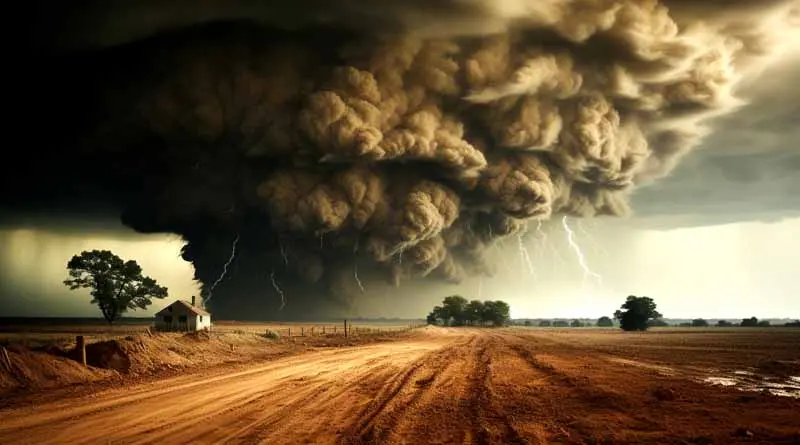
How do I create a comprehensive disaster preparedness plan?
Crafting a Comprehensive Disaster Preparedness Plan
As the winds started howling louder than I could ever remember, and the sky turned a menacing shade of gray, the reality of our vulnerability to nature’s whims hit home. It wasn’t just about securing windows and stocking up on canned goods. The question loomed larger and far more significant: How do I create a comprehensive disaster preparedness plan? It is more than just a list; it is a survival guide for when forces beyond our control tear the fabric of daily life apart.
Why a Disaster Preparedness Plan?
Living on the precipice of tornado alley, where the elements often convene with fury, has lent me a visceral understanding of nature’s capricious moods. This first-hand experience has underscored the indispensability of a comprehensive disaster preparedness plan—a robust shield against the ensuing chaos when the earth trembles, the heavens bellow, or the waters surge. The primary goal of such a plan is threefold: to guarantee safety, minimize the impact of disasters, and ensure a streamlined recovery process. Preparing in advance, knowing what steps to take during the disaster, and understanding recovery procedures are critical. When disaster strikes, the luxury of time for planning dissipates, replaced by the immediate necessity for action.
Understanding the Landscape of Threats
The variety of disasters that can strike depends heavily on geographical location:
- Tornadoes are frequent in the plains of the Midwest, requiring sturdy shelters and quick-response strategies.
- Hurricanes batter coastal areas, necessitating robust evacuation plans and flood defenses.
- Earthquakes shake the foundations of the West Coast, demanding structurally sound buildings and breakaway zones.
- Wildfires consume vast swathes of the West, requiring clear evacuation routes and fire-resistant materials.
- Floods can affect almost any area, necessitating elevated structures and waterproofing essential belongings.
Each type of disaster calls for a unique set of responses and supplies, rendering a generic approach ineffective.
Navigating the Information Maze
In the digital age, the challenge is not finding information but sifting through the overwhelming deluge of data to discern what is crucial. Emergency preparedness information must be curated critically:
- Authenticity and Relevance: Prioritize information from reliable sources such as government emergency management agencies and reputed non-profits.
- Contextual Appropriateness: Tailor information and advice to fit specific regional threats and personal circumstances.
Strategic Resource Management
Resource management in disaster preparedness involves logistical planning influenced by financial and spatial constraints:
- Prioritization: Essential resources like water, food, and medical supplies must be prioritized over less critical items.
- Accessibility: Store supplies in easily accessible locations known to all family members.
- Sustainability: Consider the longevity and storage conditions of each item to ensure they remain viable when needed.
Overcoming Communication Barriers
Disaster scenarios often lead to communication blackouts, making it difficult to stay in contact with family and emergency services:
- Redundancy: Establish multiple methods of communication, such as landlines, mobile phones, and radios.
- Pre-arranged Meetups: Designate familiar, safe meeting points for family members in case communication networks fail.
Implementing a Tailored Disaster Preparedness Plan
Risk Assessment
My planning begins with a thorough assessment of the potential disasters that could impact my locale, utilizing resources from local governments and emergency management entities to comprehend regional susceptibilities and historical occurrences.
Essential Supplies Kit
I prepare a kit that includes the basics required for survival in the immediate aftermath of a disaster:
- Water: A minimum of one gallon per person, per day, for at least three days, to ensure hydration.
- Food: A supply of non-perishable items sufficient for three days.
- First Aid and Medications: Essential for treating injuries and managing health conditions when professional medical help may not be available.
- Important Documents: Stored in waterproof containers to safeguard against damage.
Family Communication Plan
Our family plan outlines:
- Emergency Contacts: Including local emergency services and direct family contacts.
- Evacuation Points: Designated spots both nearby and out-of-town to regroup if separated.
Navigation and Evacuation Preparedness
I map out potential evacuation routes and identify official shelters, integrating these maps into our emergency kits for easy access during an evacuation.
Regular Drills and Updates
To ensure our preparedness remains sharp and current, we conduct biannual drills and update our plans and kits to reflect any new information or changes in our circumstances, such as family members moving in or out, or updates to local emergency procedures.
By rigorously addressing each of these elements, the disaster preparedness plan I’ve crafted not only enhances our chances of surviving varied disasters but also bolsters our resilience, enabling us to face catastrophic events with fortified readiness and a clear action plan.
Tools and Resources
To effectively implement this plan, several tools and resources are essential:
- NOAA Weather Radio: For real-time alerts.
- Emergency management websites: For local disaster information and updates.
- Community workshops: Many local communities offer free emergency preparedness workshops.
- Mobile apps: Apps like FEMA and Red Cross provide valuable resources and alerts.
Prepared, Not Scared
Creating and maintaining a comprehensive disaster preparedness plan has shifted my perspective from apprehension to readiness. The steps laid out are not just actions but a commitment to protecting what matters most. In a world where the only certainty is uncertainty, being prepared is not just advisable—it’s essential. With this plan, I no longer just wait for the storm to pass; I learn to navigate through it, equipped and empowered.






